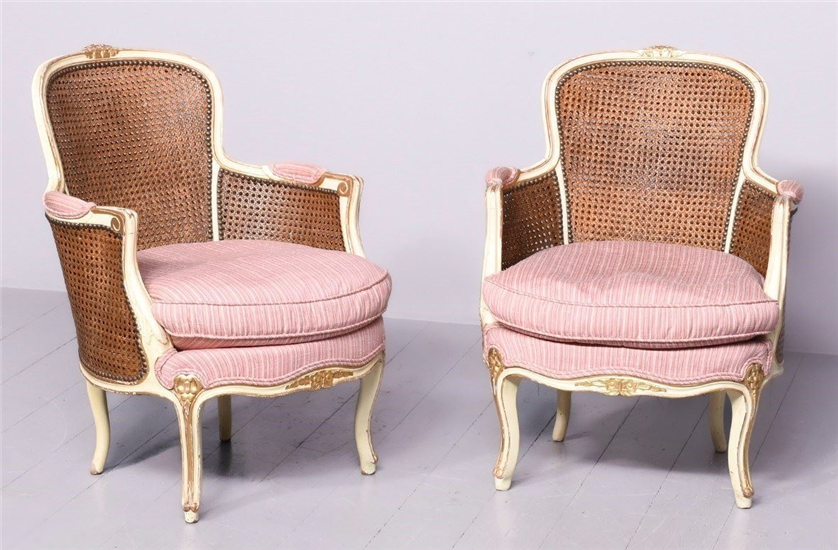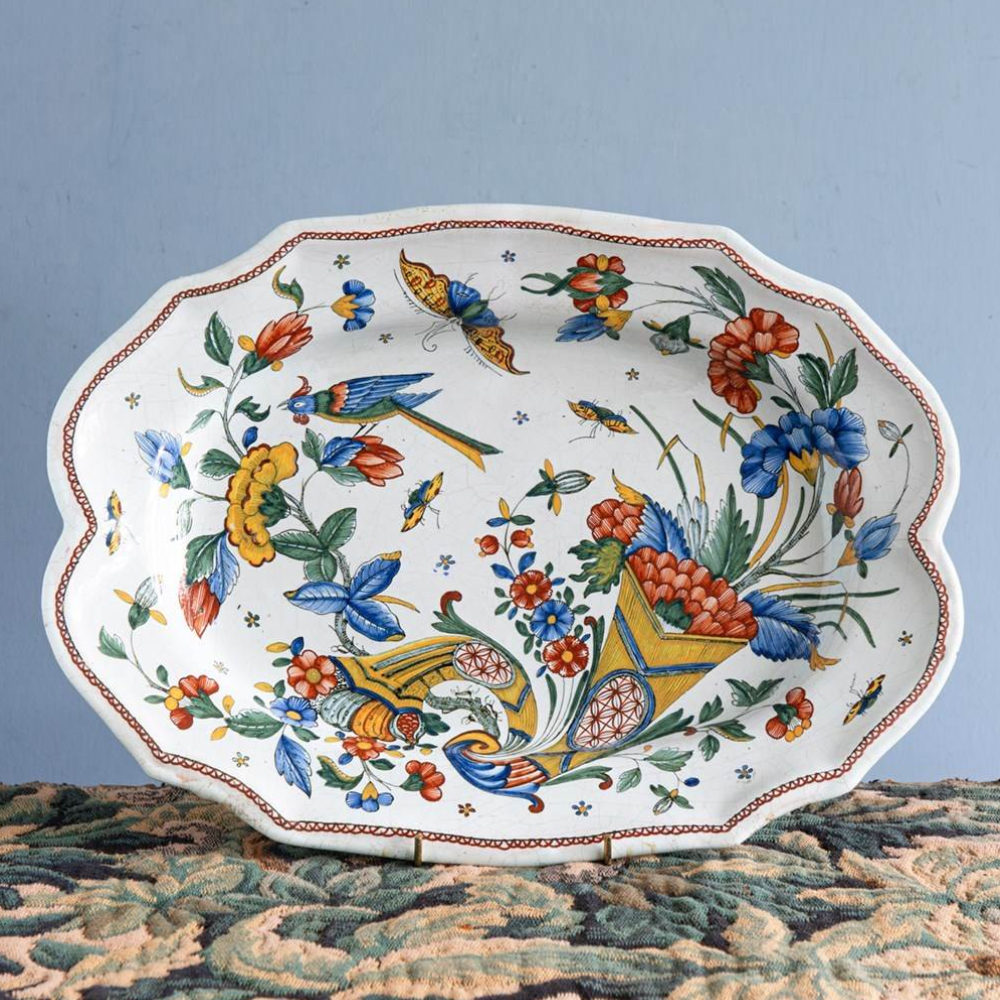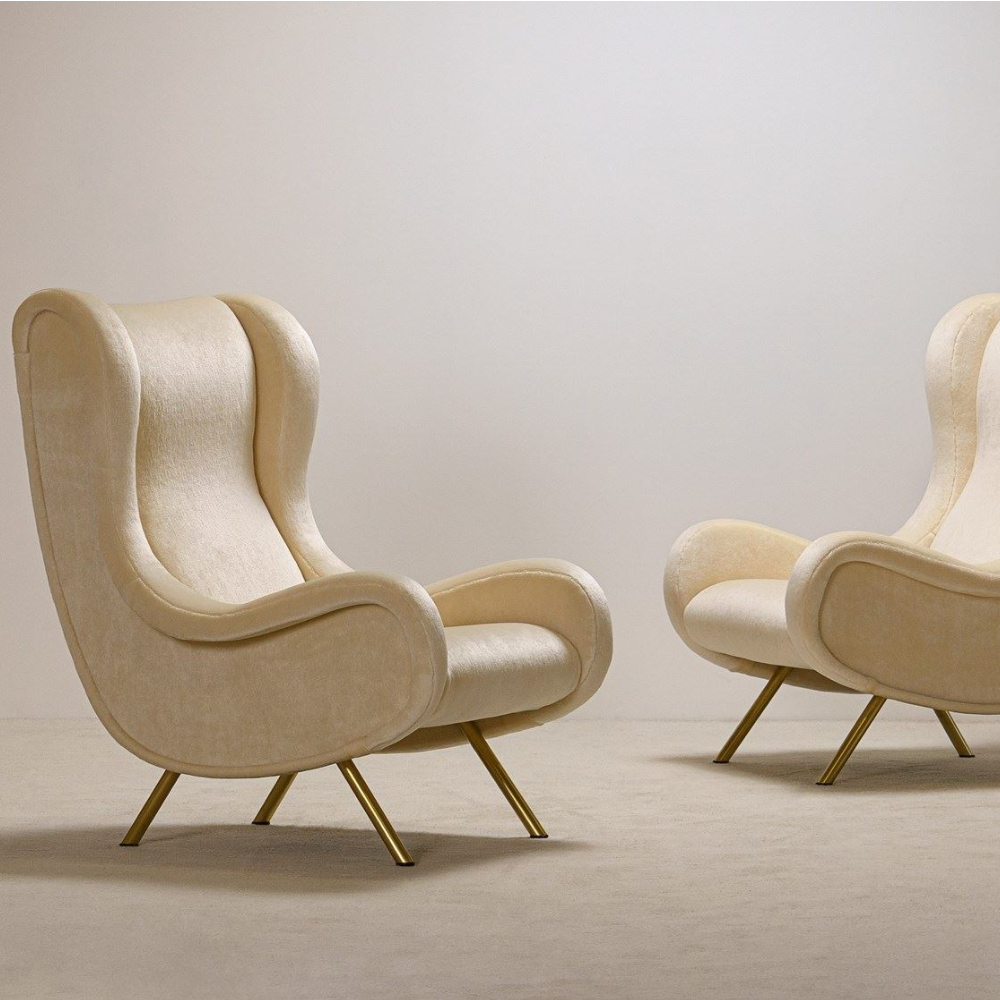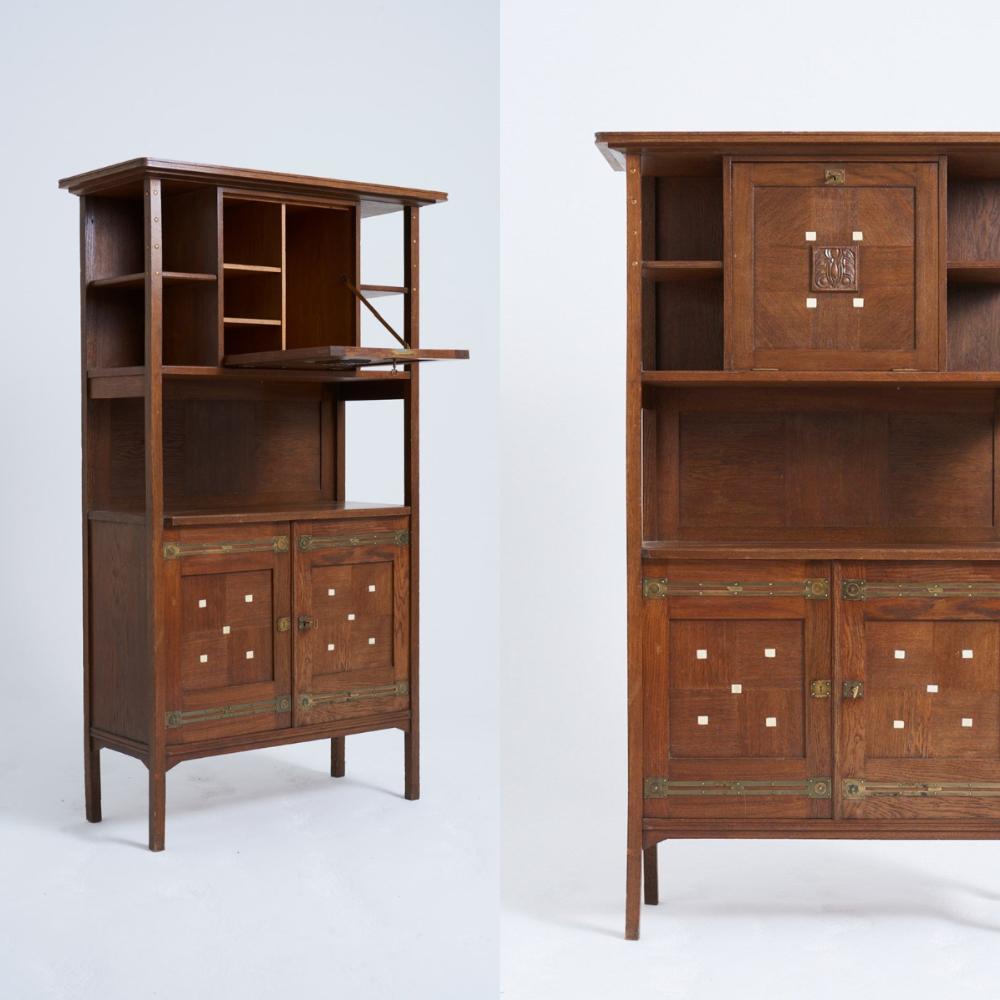
Photo credit: Georgian Antiques
Among the many different types of antique chairs available today, bergère chairs stand out. If you are unfamiliar with this design style and whether or not it would be suited to your home, read on. This introductory guide covers everything you need to know.
What is a bergère chair?
A bergère chair is a distinctive piece of furniture that exudes elegance and sophistication. Originating in France during the 18th century, these chairs are characterised by their upholstered frames, exposed wooden elements and generous cushioning.
Combining comfort with style, bergère chairs have carved out a unique niche within the world of furniture design, often featuring intricate patterns and luxurious materials that make them a sought-after addition to any interior space.
When were bergère chairs made?
The bergère chair first appeared at the start of the 18th century, during the reign of Louis XV in France. The chair's creation is attributed to the growing demand for comfortable seating solutions that showcased the opulence and grandeur of the time.
Since then, the bergère chair has experienced numerous iterations, evolving alongside changes in both fashion and technology.
During the Rococo period, such chairs were adorned with ornate carvings, curved lines and cabriole legs. The late 18th century saw a shift towards the Neoclassical style, marked by simpler lines, geometric forms and more restrained ornamentation.
The 19th century witnessed a resurgence of interest in the bergère chair, with designers of the period embracing Gothic, Renaissance and Baroque influences. In the 20th century, they took on a more modern aesthetic, incorporating contemporary materials and streamlined designs.
What does bergère mean in French?
In French, the term 'bergère' translates to 'shepherdess'. This term was used to denote the chair's association with a pastoral lifestyle and the idyllic countryside settings popular in French paintings of the era.
The bergère chair's association with leisure and relaxation stems from this pastoral imagery, as the chair was designed to offer a comfortable and inviting seating option.
What is a bergère chair made from?
A bergère chair is typically constructed using a combination of wood and upholstery. The wooden frame serves as the foundation for the chair, with intricate carvings and elegant shapes adding an air of sophistication. The most commonly used woods for bergère chairs include walnut, oak and mahogany, each lending its unique qualities to the final product.
The upholstery of a bergère chair is often crafted from luxurious materials such as silk, damask, velvet or brocade. Traditionally, the chair's upholstery would be stuffed with horsehair, down or other natural materials, providing ample cushioning and comfort.
A modern chair made in this style may utilise synthetic materials like foam and polyester batting, however, offering a similar level of comfort with increased durability.
How do I know if my chair is antique?
Determining whether a bergère chair is a genuine antique requires careful examination and knowledge of the characteristics of various historical periods. Here are a few pointers to help you identify an antique bergère chair.
- Examine the wood: antique chairs are usually made from high-quality hardwoods like walnut, oak or mahogany. Look for signs of age, such as patina or wear, which can indicate authenticity.
- Inspect the construction: antique bergère chairs would have been handmade and may exhibit minor imperfections or irregularities. Check for hand-cut dovetail joints, a sign of craftsmanship from the pre-industrial era.
- Assess the upholstery: antique chairs often feature original or period-appropriate upholstery materials, such as silk, damask or velvet. Look for signs of wear or fading consistent with age.
- Investigate provenance: research the chair's history, including previous owners and any available documentation. This can provide valuable insights into its age and authenticity.
Finally, if you have doubts about the validity of any antique chair, consult a reputable expert for professional advice.





